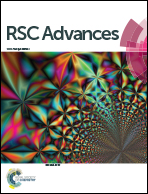Magnesium whitlockite hollow microspheres: a comparison of microwave-hydrothermal and conventional hydrothermal syntheses using fructose 1,6-bisphosphate, and application in protein adsorption
Abstract
Magnesium whitlockite (WH: Ca18Mg2(HPO4)2(PO4)12) is an abundant and biologically important biomineral in living bone, but the synthesis of single-phase WH hollow microspheres (WHHMs) still remains a challenge. In this paper, we report the environmentally friendly rapid microwave-assisted hydrothermal synthesis of WHHMs using fructose 1,6-bisphosphate trisodium salt as a biocompatible organic phosphorus source. In addition, the conventional hydrothermal method is also adopted for the synthesis of WHHMs, and the two synthetic methods are compared and discussed. The effects of the synthesis methods and experimental conditions on the crystal phase, morphology, stability and cytotoxicity of the products are investigated. The results indicate that the as-prepared WHHMs have a high biocompatibility. Moreover, the as-synthesized WHHMs are explored for potential application in protein adsorption by using hemoglobin (Hb) as a model protein, and they exhibit a relatively high protein adsorption capacity, thus, they are promising for applications in various biomedical fields such as protein adsorption.


 Please wait while we load your content...
Please wait while we load your content...